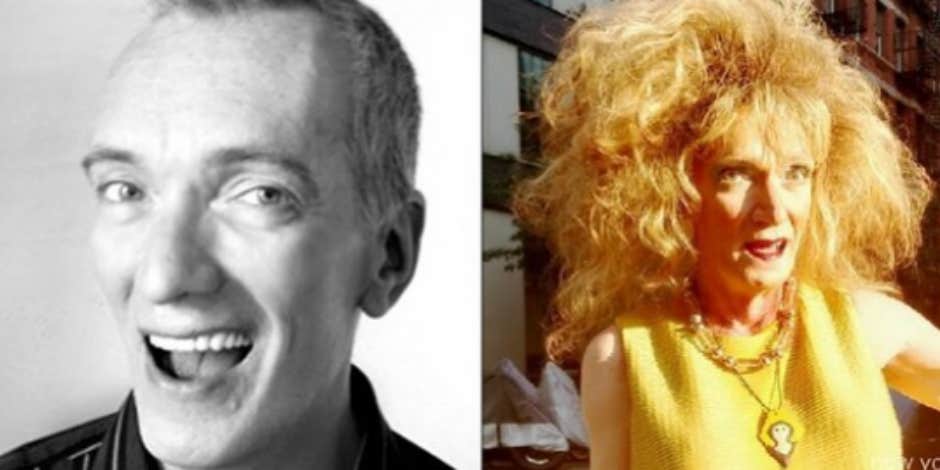How Did Brian Butterick Die? New Details About How Drag Queen Hattie Hathaway Died
The man who reinvented drag has died.
 Instagram
Instagram When a celebrity dies, the world mourns. We don't just mourn because someone has lost their life (though that's a huge part of it), we mourn because of what they represented in our own life, we mourn for the passing of time itself. Such was the case when the world lost Brian Butterick at the end of January in 2019. Butterick's name might not be one you've heard of, but the impact he had cannot be overstated. For most of the late 1980s and 1990s, Butterick was a force to be reckoned with in the drag scene in New York's Lower East Side.
You may not know who Brian is, but you definitely know about the artists who earned their stripes performing at the evenings he organized. He may be gone, but his legacy will live on forever.
So how did Brian Butterick die? Here's everything you need to know about Brian Butterick, and the tragic cause he died to soon.
1. Meet Brian Butterick
When Brian Butterick first emerged in the New York drag scene, there wasn't a drag scene, at least, there wasn't one where people like him could express themselves. What started off as a just another job, doing security at The Pyramid, a New York nightclub, quickly transformed into Butterick's calling in life: creating an inclusive, celebratory environment for members of the LGBTQ to express themselves artistically in a way they never have before.
While Brian initially was just working the door as a bouncer and the place's erstwhile security guard, that all changed once he introduced his drag persona, Hattie Hathaway. Before too long, Butterick was the creative director for the Pyramid, and in not too long at all, he had the place's name on the map!
2. What Was The Pyramid?
In the 1980s, New York was home to a thriving but exclusive nightlife scene. Limelight and Studio 54 were the places to go, to see and be seen, and if you didn't make it past the doors, that was just too darn bad. The Pyramid club was opened in 1979 as an answer to those bigger clubs. It catered to the avant-garde artistic set in the heart of the East Village, in Manhattan. It was a place where you didn't have to fit in to stand out.
The Pyramid Club was the home to some of the most famous modern drag queens. Lady Bunny and RuPaul both gave their first New York performances inside of its walls, and the drag that came out of the scene was much more politicized than it had ever been before. It wasn't just the LGBTQ community sitting up and paying attention either. The Red Hot Chili Peppers and Nirvana both had their first-ever New York shows inside of its hallowed halls.
3. How He Reinvented Drag
When Brian came onto the scene, drag queens already existed. Heck, it was the 1980s, arguably their heyday. Also, you could make the argument that drag queens have always existed, but that is neither here nor there. The way that drag existed, however, was on a pretty narrow scale, with men only, no drag kings, and most queens doing impersonations of famous women from Hollywood. Under the caring auspices of Brian and the Pyramid, that all began to change.
“Certainly, we embraced drag and what was then called cross-dressing, which many at the time insisted was a crude parody of all things female. And although we embraced parody wildly because we always loved a good ‘send-up,’ the drag we did was deconstructive. More like gender-f--k at first. Ripped fishnets with hairy legs, pantyhose beneath Wall Street suits. Women in top hats and tuxedos," he said.
4. How Did Brian Butterick Die?
Tragically, Brian Butterick died after fighting lung cancer on Jan. 30 in the early hours of the morning.
“Undertreatment and fighting lung cancer for the past six months, he was surrounded by all the friends who loved and cherished him. His warmth, intelligence, wit, and friendship, have sustained all of us throughout his many years as a fierce, visionary creative force in the community,” the message noted, further praising Butterick as a “provocateur, satirist, and magnet for bringing together diverse individuals," said a statement posted on the Howl foundation website.
Howl, a foundation dear to his heart, is dedicated to preserving the arts and culture of the lower east side.
5. What Will The Funeral Be Like?
But just because Brian has passed, that doesn't mean his friends don't plan on celebrating him in a way he would've adored: with irreverence and grand spectacle! A New Orleans-style, second-line funeral parade will be held on Monday, April 1 in the East Village.
Brian being Brian, a funeral of the standard variety just wouldn't be right. That's why his dear friends and self-proclaimed "nightlife impresarios" Chi Chi Valenti and Johnny Dynell are organizing the “giant send-off” for the drag performer, their “longtime collaborator, friend, and inspirator.” They plan on doing it properly, hiring a 17-piece brass band and bringing them out to Tompkins Square Park where they will lead the collected throng to the La Mama theatre on East Fourth Street.
Rebecca Jane Stokes is a writer living in Brooklyn, New York with her cats, Batman and Margot. Her work focuses on relationships, pop culture and news. For more of her work, check out her Tumblr.

